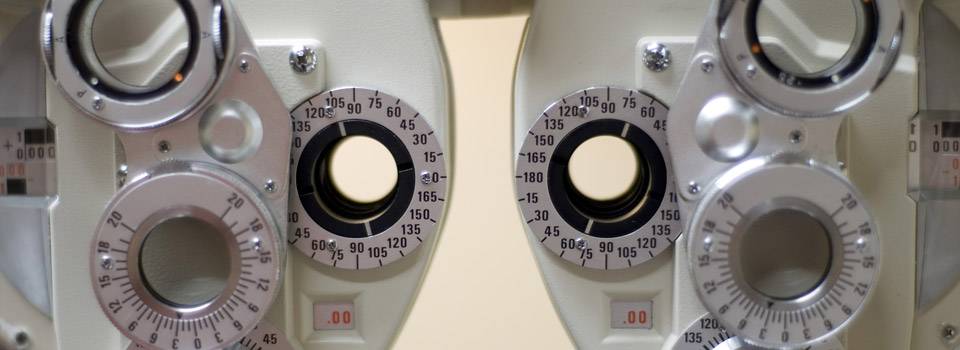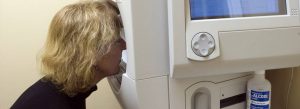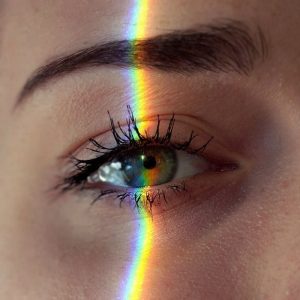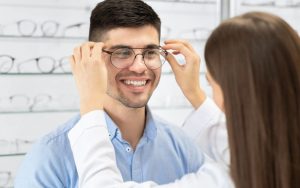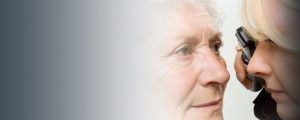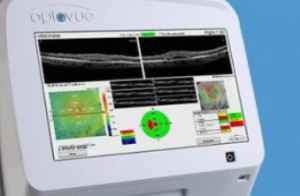Whether you are visiting your eye doctor for your annual checkup, or have noticed that your vision is not as sharp as it used to be, a vision test can determine how well you are currently seeing.
Vision tests, also called refraction tests, are a normal part of a routine eye examination. A refraction test helps your doctor to determine your optical prescription and if eyeglasses or contact lenses are needed to improve your visual clarity.
If you suspect you have an eye condition, contact an eye doctor near you, who can diagnose and treat the condition.
SEE RELATED: Why Do Optometrists Use Eye Charts?
What is 20/20 vision?
A measure of 20/20 vision is considered ‘perfect’ vision, though it only represents how far you can see from 20 feet away. Your eye doctor will measure if you have 20/20 vision using a letter chart, also called a Snellen chart, which is posted on the wall 20 feet away from the examination chair. If you have 20/20 vision, you are able to clearly see the letters that are ⅜ of an inch (or 9 mm) in size, while sitting in the chair.
If your vision does not measure 20/20, your doctor will explain that a refractive error may be affecting your vision. Refractive errors prevent light from bending properly as it enters your eye. The good news is, that the refraction test will enable your doctor to calculate the exact optical prescription you will need to help you see better.
Types of refractive errors
Refractive errors are infamous for causing blurred vision, though each type affects vision differently.
- Astigmatism affects vision at all distances, and occurs when the eye’s cornea or lens is irregularly shaped, preventing the light from bending properly.
- Hyperopia affects near vision, and occurs when the eyeball is too short, causing the light to focus behind the retina, instead of on it.
- Myopia affects distance vision, and occurs when the eyeball is too long, causing light to focus in front of the retina, instead of on it.
- Presbyopia affects near vision, and occurs as the lens hardens and becomes less flexible (with age), affecting its ability to focus on near objects.
How often should I have a refraction test?
Children
Children should have an annual eye exam, including a refraction test, beginning at age three. Detecting a vision problem early on will prevent any developmental delays associated with poor vision.
It is important to understand that even if your child has 20/20 vision, it is crucial that your eye doctor test for other vision problems, such as lazy eye or convergence insufficiency.
These tests involve evaluating your child’s visual skills, not just their optical prescription.
Adults
- If you are in good health, under age 40, and have not noticed any vision changes, it is recommended to have a refraction test every two years.
- If you wear corrective eyeglasses or contact lenses, it is recommended to have a refraction test every year, or as recommended by your eye doctor, to monitor any changes to your vision.
- If you have diabetes, doctors recommend having a refraction test every year to detect any changes to your vision. Diabetes is directly linked to sight-threatening ocular diseases, such as diabetic retinopathy and glaucoma, so monitoring your eyes and vision is critical.
- If you have a family history of glaucoma, or any other ocular disease, or are over age 40, it is strongly encouraged to have a refraction test every year to monitor your ocular health and vision.
What should I expect during a refraction test?
During a refraction test your doctor will assess your visual acuity and determine the best refractive correction for your glasses or contact lenses.
There are two different ways to obtain your refractive correction:
Computerized (automated) refractor: Your doctor will use a computerized machine to measure the light reflecting off your retina.
Manual refractor: Your doctor may initially shine a light into your eyes to assess the light reflecting off your retina, this is called a retinoscope.
Once your doctor determines if a refractive error is present, your optical prescription will be calculated as you look through a series of lenses. Your doctor will instruct you to look through a phoropter, an instrument that is placed comfortably in front of your eyes as you sit in the examination chair.
As you look through the phoropter, you will be asked to identify letters on a chart approximately 20 feet away.
Your doctor will test each eye separately, and ask you to read the smallest letters you can see clearly. Then, as you look at the letters on the chart, your doctor will selectively switch the lenses in the phoropter, offering you choices, and asking you to determine which lens provides the clearest vision.
After each eye is tested, your doctor will combine the prescriptions obtained from each eye to ensure that you are seeing both clearly and comfortably. If the two prescriptions together are too strong, your doctor may lower the prescription in one or both eyes until you feel comfortable.
Refraction test for children
When testing your child’s refractive correction, your eye doctor may use a trial frame, which is worn like a pair of eyeglasses, instead of using the large phoropter. A trial frame can provide a more accurate optical prescription, especially for young children.
For young children who are unable to identify letters, a vision chart with pictures of familiar objects can be used.
How can I understand my prescription?
Your optical prescription will include at least one of the following:
-
- Sphere (SPH)– This is the lens power, measured in diopters. It is preceded by a plus or minus sign, depending on the type of refractive error you have.
- Cylinder (CYL)– This is the lens power for astigmatism.
- Axis– This is the lens meridian, and represented in a number from 1-180, depending on the degree of astigmatism.
- Reading add– This is the magnifying power that is added to the bottom segment of a bifocal or multifocal lens for correction of presbyopia or near-vision problems.
Regular eye exams are vital to ensure that your eyes and vision are healthy. If you are due for an eye exam, or have noticed any changes to your vision, schedule an appointment with your eye doctor as soon as possible.
LEARN MORE: Guide to Eye Exams
Blurry vision can be quite uncomfortable, but with corrective lenses you will be able to improve your vision clarity— enhancing the way you look at life.
